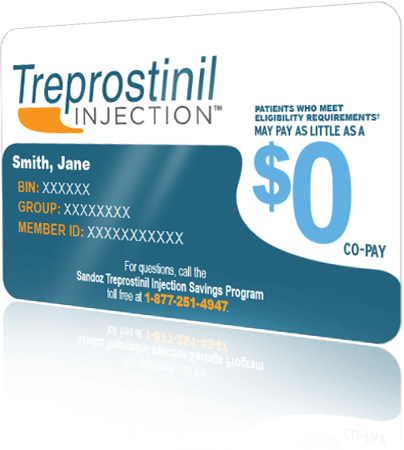Getting Started
A specialty pharmacy service provider you know and trust
You and your patients will be in familiar and capable hands with access to a specialty pharmacy (SP) provider with years of experience servicing patients who have been prescribed Remodulin® (treprostinil) Injection.
The SP that supplies Sandoz Treprostinil Injection can provide
| • | A familiar and established pulmonary arterial hypertension (PAH) care team |
| • | Support for generic substitution in accordance with applicable law and prescriber’s instructions |
| • | Benefits investigation research to help patients understand their insurance and out-of-pocket costs |
| • | Consultations to support medication initiation and titration, and injection site management and care |
Your patients can receive support through
| • | In-home training on the safe and effective use of Treprostinil Injection and associated pumps and supplies |
| • | Ongoing clinical counseling and education from licensed pharmacists and nurses |
Financial assistance for your patients
Treprostinil Injection co-payment assistance may be available for patients who qualify.* Your patients may pay as little as $0 per prescription filled for Treprostinil Injection.
about how to help your patients receive co-payment support or financial assistance that may be available.

*Sandoz Treprostinil Injection Savings Program Eligibility
The Sandoz Treprostinil Injection Savings Program provides annual support for patient cost-sharing for prescriptions filled with Sandoz Treprostinil Injection. Your commercially insured patients may pay a co-pay as low as $0 out-of-pocket per Treprostinil Injection prescription filled. Your patient pays the first co-pay for their Treprostinil Injection and Sandoz will pay the balance of their cost-sharing. This program is not health insurance. This program is for commercially-insured patients only; uninsured cash-paying patients are not eligible. Patients are not eligible if prescriptions are paid, in whole or in part, by any state or federally funded programs, including but not limited to Medicare (including Part D, even in the coverage gap) or Medicaid, Medigap, VA, DOD, or TriCare, or private indemnity, or HMO insurance plans that reimburse your patient for the entire cost of their prescription drugs, or where prohibited by law. Card may not be combined with any other rebate, coupon, or offer. Card has no cash value. Sandoz reserves the right to rescind, revoke, or amend this offer without further notice.
Get started with Treprostinil Injection
Completing the referral for Treprostinil Injection is a straightforward process.
Simply collect the necessary clinical information, complete the referral form, and fax the form and supporting documentation to your selected SP. Download the referral form, or talk with your sales representative.
Remind your patients to answer the phone at initiation and throughout treatment.
Delays can occur if the SP has trouble reaching the patient.
